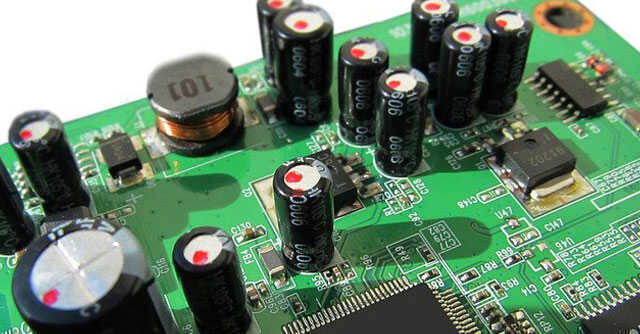
ICRIER bats for suspension of domestic sourcing requirement to boost electronics sector


The Union government should temporarily phase out domestic procurement and localization policies from the PLI scheme and phased manufacturing programme to boost exports as part of the two-step strategy to achieve global competitiveness in the electronics sector, ICRIER has recommended in a report released by minister of state for electronics and IT Rajeev Chandrasekhar on Monday.
With India’s electronics exports languishing at around $15 bn despite several government initiatives to boost competitiveness, the think tank has recommended temporarily suspending localization requirements, removing duties on intermediate items, and accelerating integration through bilateral and regional free trade agreements. This is in line with the strategy adopted by China and Vietnam, which now boast of nearly $900 billion and $126 billion worth of electronics products exports annually.
Both India and Vietnam exported similar value of electronic items in 2010. But over the next ten years, Vietnam’s exports surged to become 9 times that of India’s, ICRIER said in its report “Globalise to Localise: Exporting at Scale and Deepening the Ecosystem are Vital to Higher Domestic Value Addition in Electronics.”
“First, the electronics sector should be able to source inputs from the lowest cost suppliers anywhere in the world until it achieves a global scale,” the report said.
ICRIER pointed out that India’s strategy of simultaneously increasing exports and greater use of domestic content is unlikely to be of much benefit and should rather focus on exporting at scale to the global market and thereafter increase the share of local contents.
“Trying to achieve both broad goals-globalise and localise- simultaneously is unlikely to succeed in the absence of a competitive domestic ecosystem of ancillary suppliers…The study therefore proposes that India should adopt the mantra of ‘first globalise, then localise,’ a strategy also pursued by China and Vietnam… Instead of trying to achieve both simultaneously, they have approached them sequentially,” said the report authored by Deepak Mishra, Neha Gupta, Sanya Dua, and Sanjana Agarwal of ICRIER in collaboration with India Cellular and Electronics Association (ICEA). It would also mean phasing out localization policies from programs like PLI and PMP and not increasing custom duties further. By reversing policies that explicitly encourage import substitution, this path would quickly build India’s reputation as a low-cost producer of high-quality electronic products,” the report added.
Rajeev Chandrasekhar, MoS for Electronics and IT said, “This report an important and interesting element that describes in some sense what our strategy will be for the next few years. It outlines that electronics is about scale. China does $900 billion of exports. The global value chains for electronics is about a trillion and a half. It is clear that this is a business of volumes and scale... The postulation in this report is that we must export aggressively to reach the scales in addition to domestic production and domestic supplies and domestic consumption.”
In fact, India’s electronics sector has not only struggled to compete globally, but also to survive at home. The electronics manufacturing as a share of national output has stagnated during the last two decades, according to the report. India’s ratio of domestic value addition to total value addition has also been low at 18% compared to 38% in case of China, which indicates the percentage of value added generated within the country.
It pressed for removing localization requirements from trade and industrial policies and procurement rules. But, at the same time, the government should work towards increasing the share of domestic value addition over the next few years by creating a competitive domestic ecosystem of ancillary suppliers by improving business climate, removing unnecessary regulations, helping with technology transfer and supporting services, training of workers, better sharing of market information, investment in R&D, and targeted fiscal incentives. This could be achieved through cooperative collaboration with the state governments and the private sector, the report noted.
The government has laid out a target of $300 bn for electronics manufacturing from $76 bn currently, and $120 billion of exports from $16 bn now.
“Strategy as laid out in the report talks about the broadening and deepening of the electronic segment. That is what will take us to the $300 billion dollars,” said the minister.
India’s electronics exports have increased by threefold from $5.8 billion to $16 billion in the last seven years. But Vietnam exports eight times more electronics products than India while China exports 60 times.
China and Vietnam have adopted policies that encourage companies to achieve global scale, even if it means using fewer local contents, it said. In parallel, these countries have taken steps to build a globally competitive ecosystem of ancillary suppliers, which takes time and focused collaborative efforts. “Thus, in the medium- to long-run, these countries are in a stronger position to insist that firms achieve both greater scale and have more domestic contents," it added.
It further said that while on one hand, India has signed free trade agreements with Australia and the UAE in record time, and negotiations are underway with the UK and European Union, but there has been steady increase in custom duties across a wide range of products over the last three years.
The current government has adopted several initiatives and policies to make India a global production and exports hub. These include the Make in India initiative (2014), the Phased Manufacturing Programme (2017), the National Policy on Electronics (2019), and, the Production Linked Incentive Scheme (2020).
